Abstract
1. The major metabolites of 3,5-di-tert.-butyl-4-hydroxytoluene (BHT) in the rat are 3,5-di-tert.-butyl-4-hydroxybenzoic acid (BHT-acid), both free (9% of the dose) and as a glucuronide (15%), and S-(3,5-di-tert.-butyl-4-hydroxybenzyl)-N-acetylcysteine. 2. The mercapturic acid does not appear to derive from the usually accepted enzyme mechanism, and may involve a non-enzymic reaction between BHT free radical and cysteine. 3. The ester glucuronide and mercapturic acid found in rat urine are also the major metabolites in rat bile and must be responsible for the enterohepatic circulation. 4. Free BHT-acid is the main component in rat faeces. 5. In man, BHT-acid, free and conjugated, is a minor component in urine, and the mercapturic acid is virtually absent. The bulk of the radioactivity is excreted as the ether-insoluble glucuronide of a metabolite in which the ring methyl group and one tert.-butyl methyl group are oxidized to carboxyl groups, and a methyl group on the other tert.-butyl group is also oxidized, probably to an aldehyde group. 6. These differences in metabolism by the rat and by man are sufficient to account for the difference in excretion by the two species.
Full text
PDF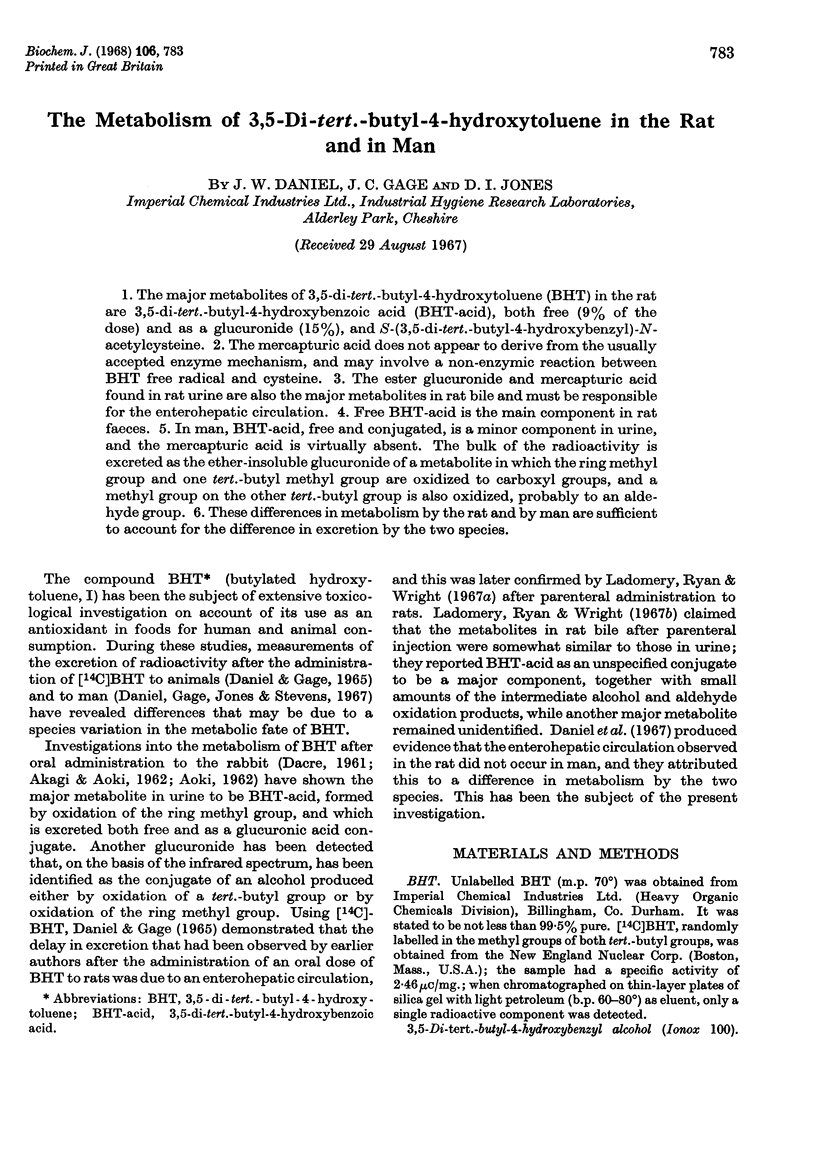
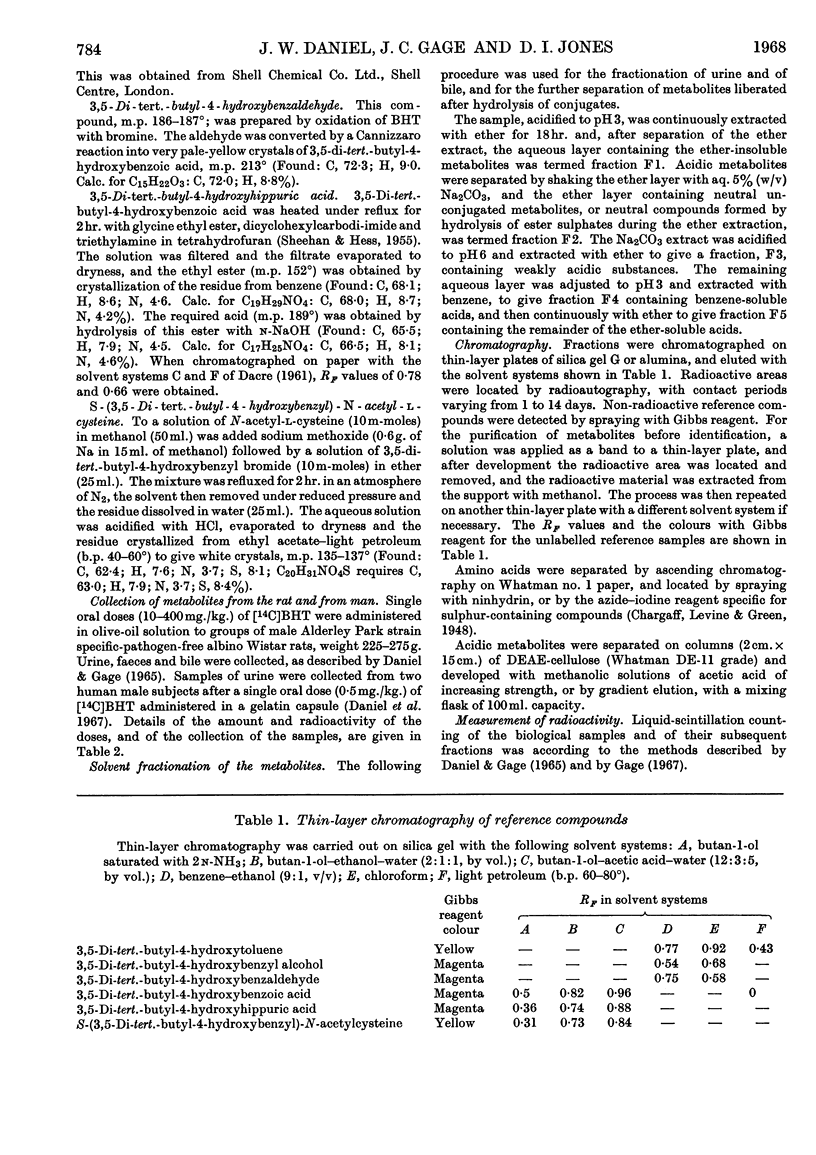
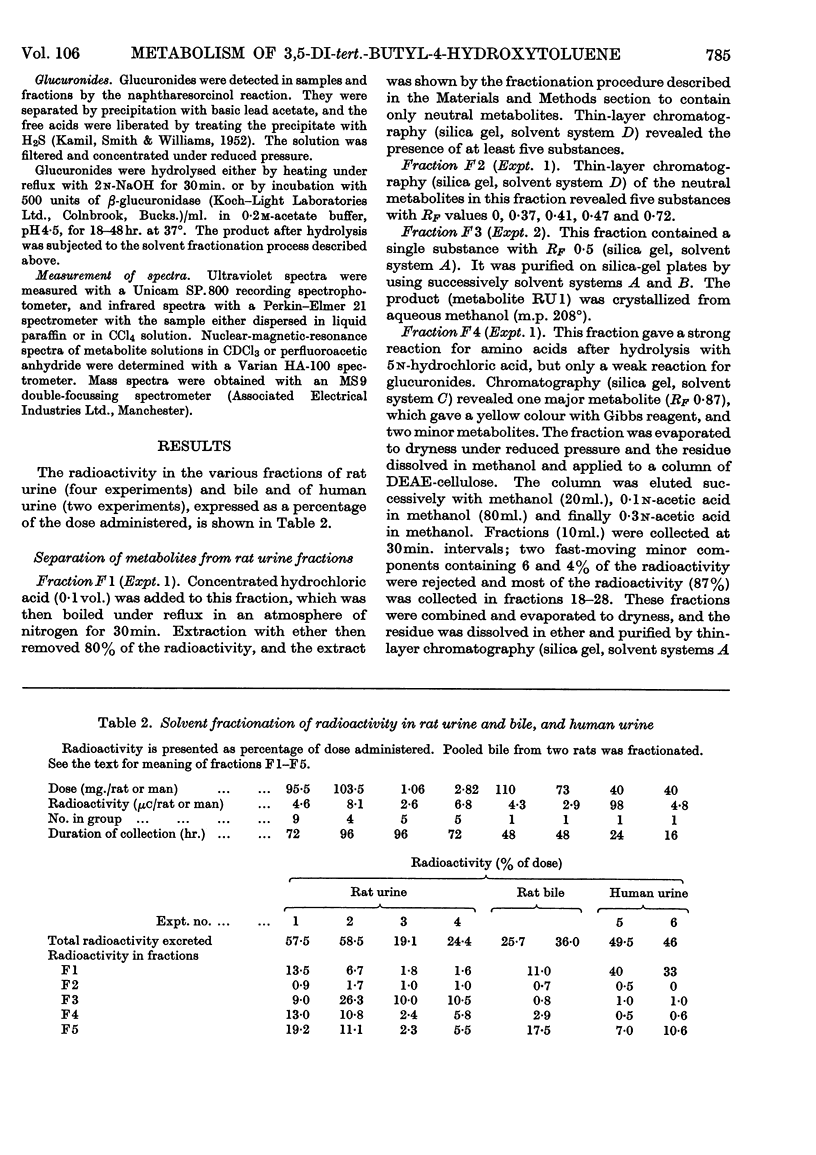
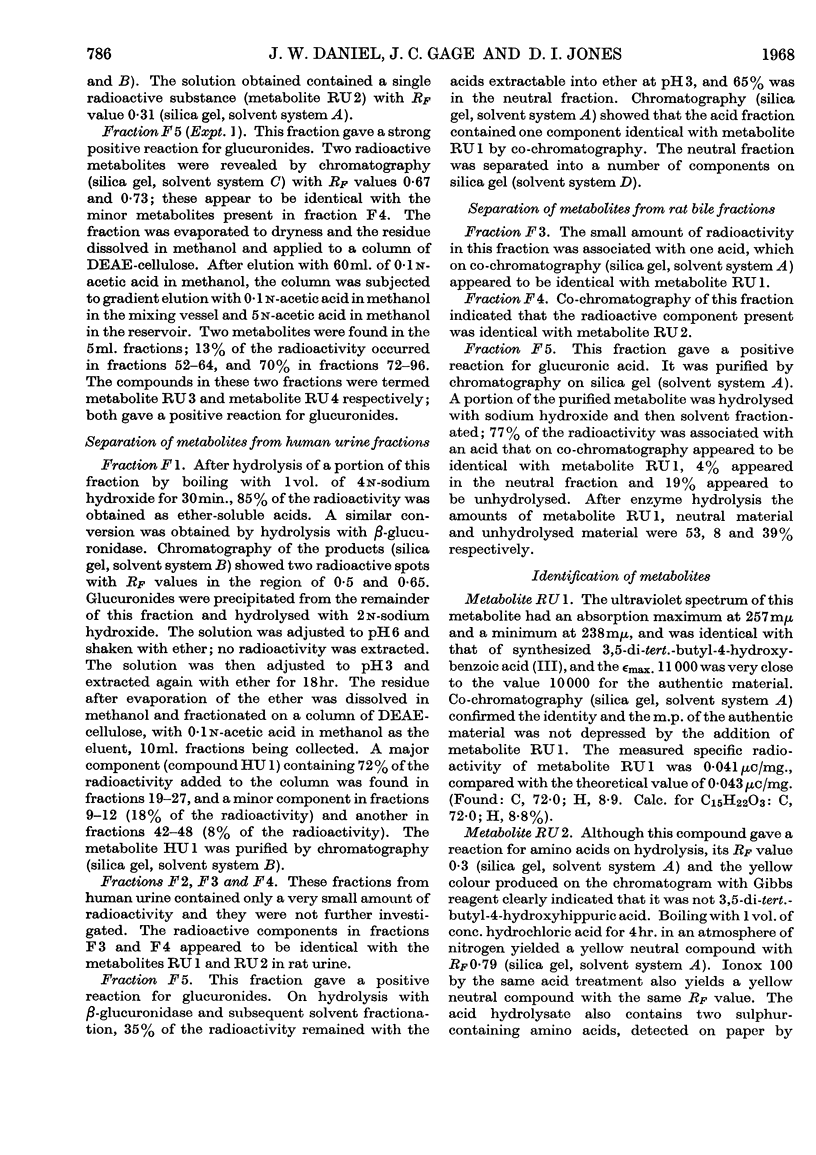
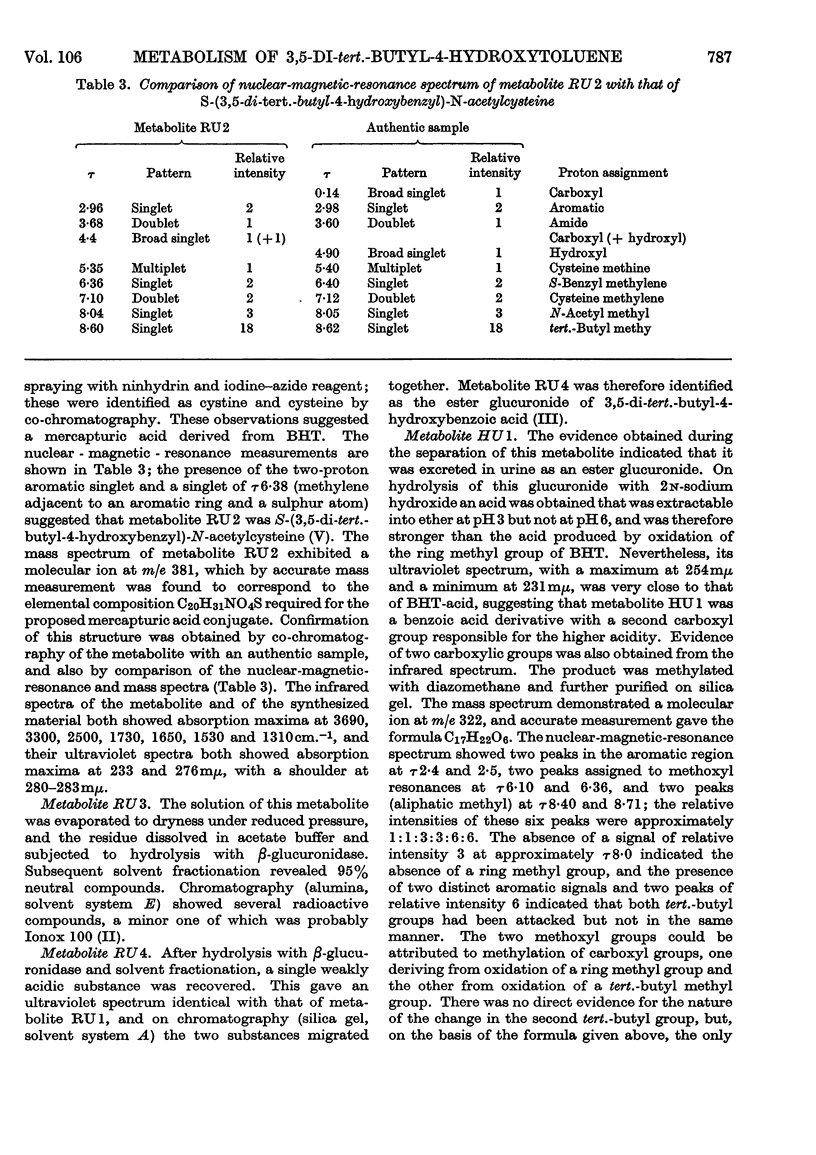
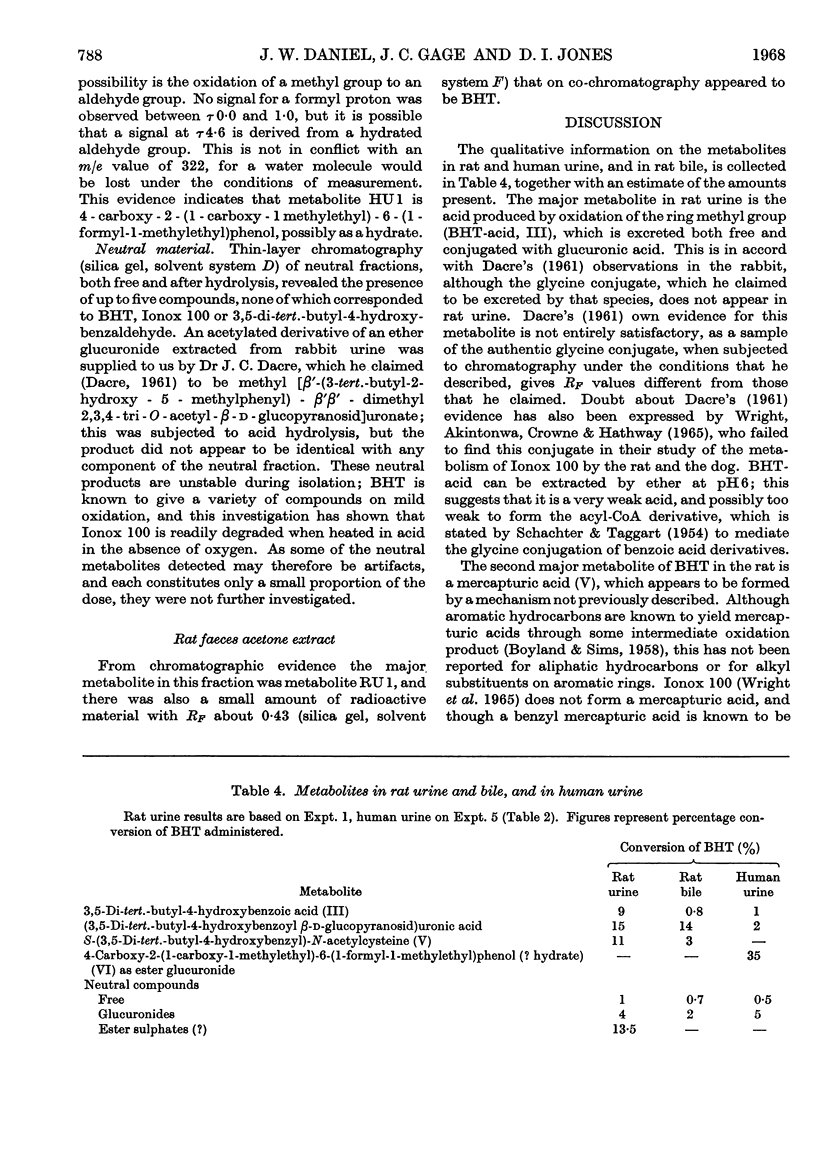
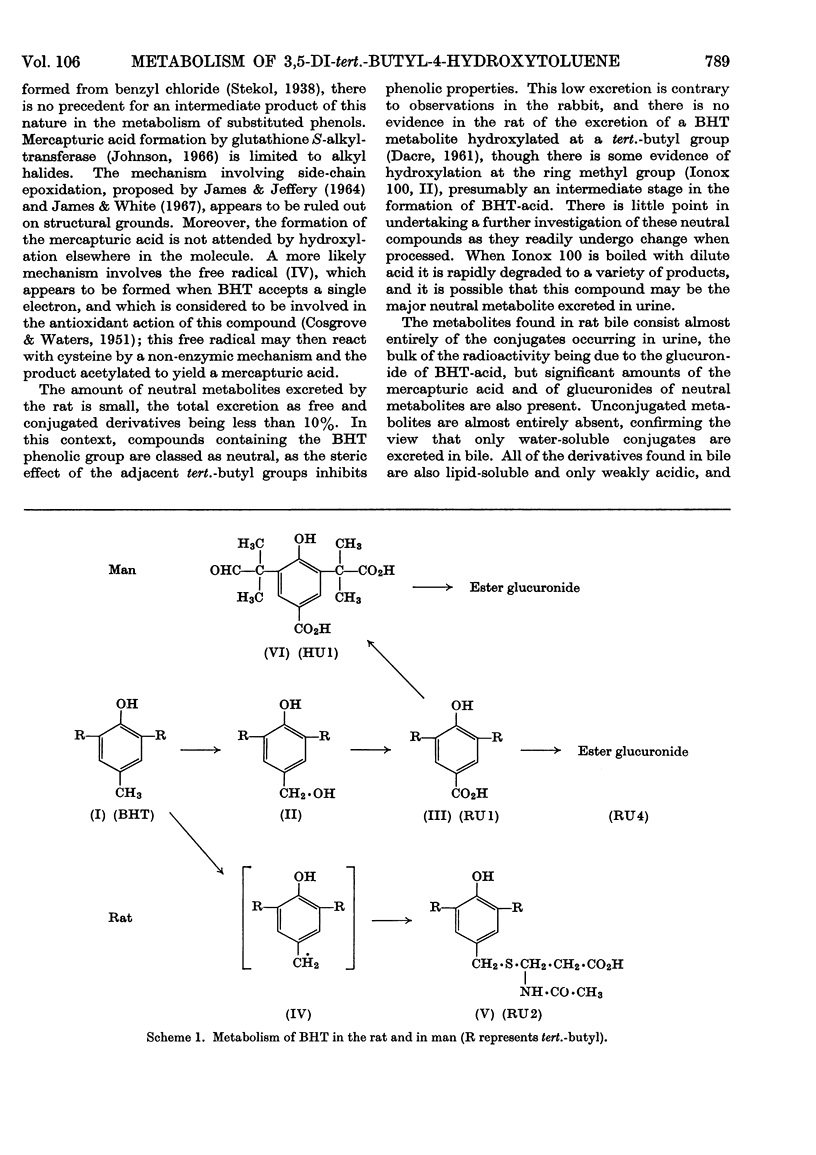

Selected References
These references are in PubMed. This may not be the complete list of references from this article.
- BOYLAND E., SIMS P. Metabolism of polycyclic compounds. 12. An acid-labile precursor of 1-naphthylmercapturic acid and naphthol: an N-acetyl-S-(1:2-dihydrohydroxy-naphthyl)-L-cysteine. Biochem J. 1958 Mar;68(3):440–447. doi: 10.1042/bj0680440. [DOI] [PMC free article] [PubMed] [Google Scholar]
- Dacre J. C. The metabolism of 3:5-di-tert.-butyl-4-hydroxytoluene and 3:5-di-tert.-butyl-4-hydroxybenzoic acid in the rabbit. Biochem J. 1961 Apr;78(4):758–766. doi: 10.1042/bj0780758. [DOI] [PMC free article] [PubMed] [Google Scholar]
- Daniel J. W., Gage J. C., Jones D. I., Stevens M. A. Excretion of butylated hydroxytoluene (BHT) and butylated hydroxyanisole (BHA) by man. Food Cosmet Toxicol. 1967 Oct;5(4):475–479. doi: 10.1016/s0015-6264(67)83148-1. [DOI] [PubMed] [Google Scholar]
- James S. P., White D. A. The metabolism of phenethyl bromide, styrene and styrene oxide in the rabbit and rat. Biochem J. 1967 Sep;104(3):914–921. doi: 10.1042/bj1040914. [DOI] [PMC free article] [PubMed] [Google Scholar]
- Johnson M. K. Studies on glutathione S-alkyltransferase of the rat. Biochem J. 1966 Jan;98(1):44–56. doi: 10.1042/bj0980044. [DOI] [PMC free article] [PubMed] [Google Scholar]
- KAMIL I. A., SMITH J. N., WILLIAMS R. T. Studies in detoxication. 41. A study of the optical rotations of the amides and triacetyl methyl esters of some biosynthetic substituted phenylglucuronides. Biochem J. 1951 Dec;50(2):235–240. doi: 10.1042/bj0500235. [DOI] [PMC free article] [PubMed] [Google Scholar]
- Ladomery L. G., Ryan A. J., Wright S. E. The biliary metabolites of butylated hydroxytoluene in the rat. J Pharm Pharmacol. 1967 Jun;19(6):388–394. doi: 10.1111/j.2042-7158.1967.tb09565.x. [DOI] [PubMed] [Google Scholar]
- Ladomery L. G., Ryan A. J., Wright S. E. The excretion of [14C] butylated hydroxytoluene in the rat. J Pharm Pharmacol. 1967 Jun;19(6):383–387. doi: 10.1111/j.2042-7158.1967.tb09564.x. [DOI] [PubMed] [Google Scholar]
- SCHACHTER D., TAGGART J. V. Glycine N-acylase: purification and properties. J Biol Chem. 1954 May;208(1):263–275. [PubMed] [Google Scholar]
- Wright A. S., Akintonwa D. A., Crowne R. S., Hathway D. E. The metabolism of 2,6-di-tert.-butyl-4-hydroxymethylphenol (Ionox 100) in the dog and rat. Biochem J. 1965 Oct;97(1):303–310. doi: 10.1042/bj0970303. [DOI] [PMC free article] [PubMed] [Google Scholar]


